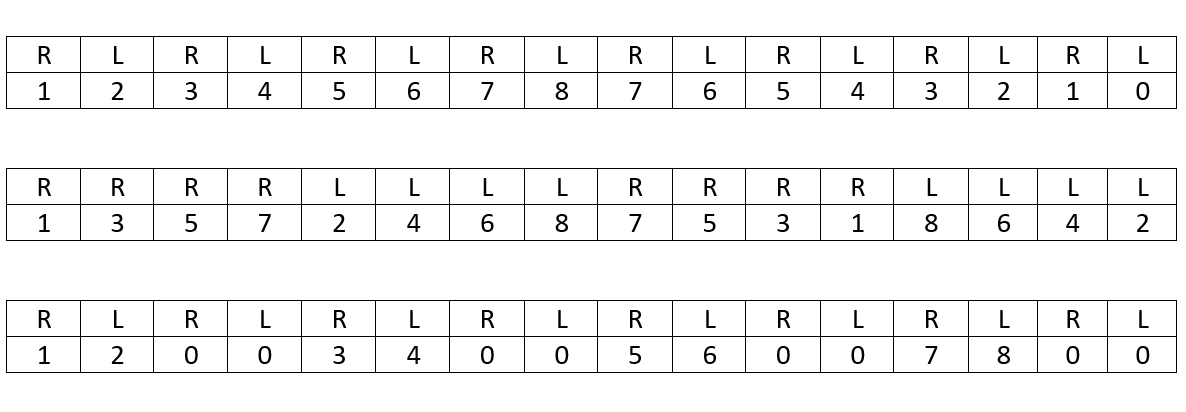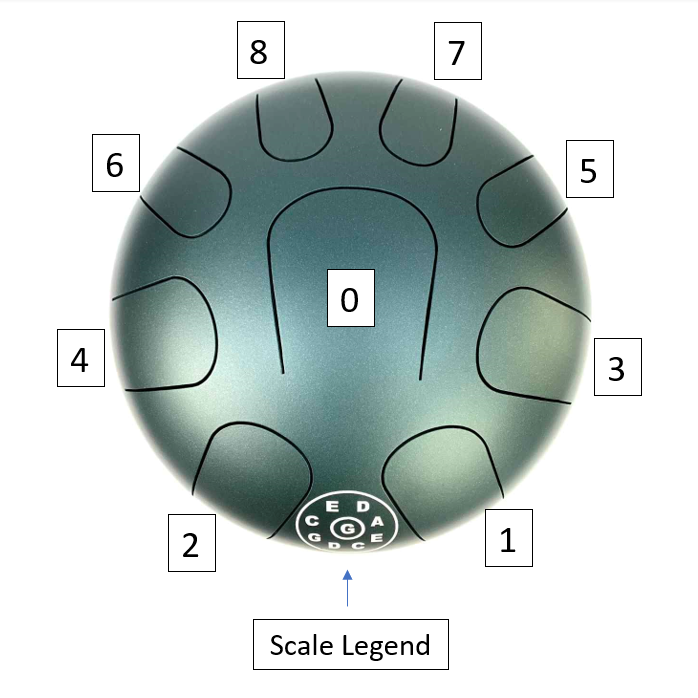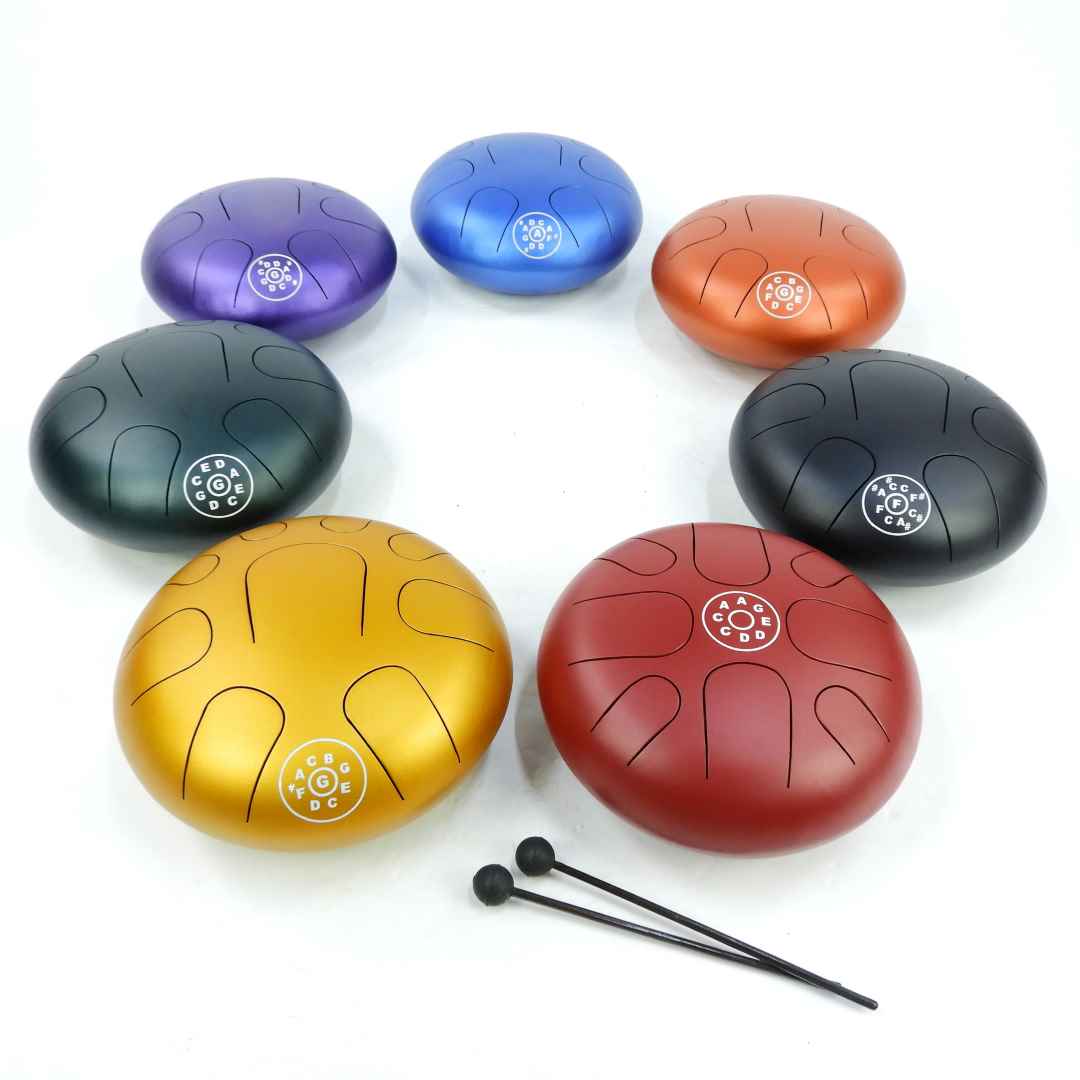The more common 9-note layout is shown in the image on the right. The scale legend is located on the front edge of the instrument in a white circle. You may have a different tuning to the one shown, in which case your letters will be different. But don’t worry, the layout will be the same.
The letter inside the smaller circle represents the largest tongue, also called the “ding”, found in the centre of the instrument. We have numbered this note 0. The letters around the edge of the circle represent the eight smaller tongues. These letters are the notes of the scale.
To play the scale, we start at the 5 o’clock position, which is the note nearest to us on the right-hand side. We have numbered this note 1. From there, we move right-to-left, front-to-back, ignoring the ding.
We follow the scale from 1 to 8 playing the odd-numbered notes with our right hand and the even-numbered notes with our left hand.
This layout lets us play the whole scale alternating our hands right and left. Try playing your steel drum in this order. Congratulations, you’ve just played the scale of your steel drum!
The ding is technically part of the scale, but it is always several tones below the rest of the scale and is usually utilised more as an accent or drone to add flavour to your playing. Try incorporating it after you’ve gotten used to the main notes of the scale.
Let’s try a few exercises to get familiar with the instrument. Try each exercise below, making sure to use the correct hand. An empty cell means a rest. When you get to the end of a table, you can start again! Try playing each one several times in a row without any breaks. Start slowly, perhaps with a metronome if you want to keep a steady tempo, and gradually get faster until you can play smoothly and clearly.














